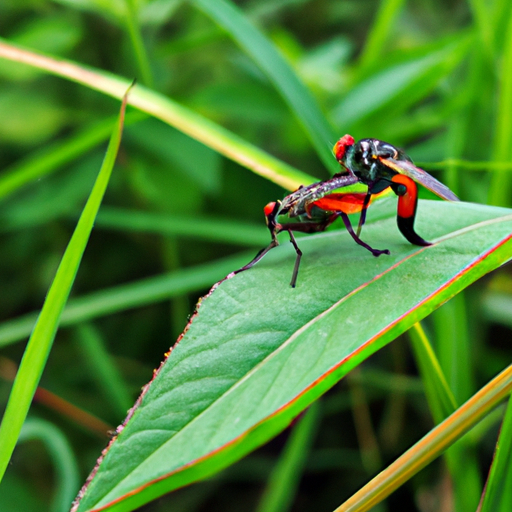 Introduction:
Introduction:
Reproduction is a fundamental process for the survival and evolution of all living organisms, including animals. Traditionally, sexual reproduction has been considered the primary mode of reproduction in the animal kingdom. However, asexual reproduction stands as a remarkable alternative, allowing certain species to reproduce without the need for a partner. In this article, we embark on an extensive exploration of asexual reproduction in animals, delving into its mechanisms, advantages, disadvantages, and the fascinating examples found across various taxonomic groups.
I. Understanding Asexual Reproduction:
Asexual reproduction refers to the process by which offspring are produced without the involvement of gametes (sperm and eggs) or the fusion of genetic material from two parents. Instead, a single parent organism can give rise to genetically identical offspring, known as clones. This phenomenon is observed in numerous animal species, challenging the traditional notion that sexual reproduction is the exclusive mode for genetic diversity and survival.
II. Mechanisms of Asexual Reproduction:
Asexual reproduction encompasses several distinct mechanisms that allow animals to reproduce without mating or the formation of gametes. The most prevalent modes include:
1. Binary Fission:
Binary fission involves the splitting of a parent organism into two or more equal-sized daughter organisms. It is commonly observed in certain invertebrates, such as flatworms (Planaria) and sea anemones (Anthozoa), where the parent gradually divides into two halves, each regenerating the missing parts to become a fully functional individual.
2. Budding:
Budding occurs when a small outgrowth, known as a bud, forms on the parent organism and eventually develops into an independent offspring. This method is common among cnidarians like hydra and corals, where the bud detaches, grows, and matures into a new individual.
3. Fragmentation and Regeneration:
Fragmentation occurs when a parent organism breaks into fragments, which then regenerate into complete individuals. Annelids, such as earthworms (Lumbricus terrestris), and certain starfish (Asteroidea) species exhibit this form of asexual reproduction, allowing them to regenerate lost body parts and create new individuals from each fragment.
4. Parthenogenesis:
Parthenogenesis involves the development of an embryo from an unfertilized egg. In this process, the female parent produces offspring that are genetically identical to her. Parthenogenesis is observed in various reptiles, including certain lizards and snakes, as well as some insects and crustaceans.
III. Advantages and Disadvantages of Asexual Reproduction:
Asexual reproduction offers several advantages to the organisms that employ this mode of reproduction:
1. Rapid Reproduction: Asexual reproduction allows for rapid population growth since offspring can be produced without the time-consuming process of finding and attracting mates.
2. Colonization: Asexual reproduction facilitates the colonization of new habitats since a single individual can establish a population.
3. Consistency: Clonal offspring inherit the successful traits and adaptations of their parent, ensuring genetic consistency within a specific environment.
However, asexual reproduction also carries certain inherent disadvantages:
1. Limited Genetic Diversity: Asexual reproduction reduces genetic diversity, making a population more susceptible to environmental changes and diseases.
2. Accumulation of Mutations: As asexual reproduction involves the replication of the parent’s genetic material, harmful mutations may accumulate over time, increasing the risk of genetic disorders.
IV. Fascinating Examples of Asexual Reproduction in Animals:
1. Rotifers (Phylum Rotifera): These tiny aquatic animals reproduce through parthenogenesis under favorable conditions, enabling them to rapidly populate freshwater environments.
2. Whiptail Lizards (Genus Aspidoscelis): All-female species of whiptail lizards engage in parthenogenesis, producing genetically identical offspring without the need for mating.
3. Aphids (Family Aphididae): Aphids are notorious for their ability to reproduce parthenogenetically during favorable seasons, ensuring the rapid expansion of their populations.
4. Komodo Dragons (Varanus komodoensis): While Komodo dragons typically reproduce sexually, certain females have been known to produce viable offspring through facultative parthenogenesis, despite being housed in isolation.
Conclusion:
Asexual reproduction provides a fascinating alternative to sexual reproduction in the animal kingdom, allowing certain species to thrive without the need for a partner. Through various mechanisms such as binary fission, budding, fragmentation, and parthenogenesis, these organisms have evolved unique strategies to maintain their populations and colonize new environments. However, asexual reproduction comes with inherent limitations, including reduced genetic diversity and the accumulation of harmful mutations. The remarkable examples of asexual reproduction in animals continue to captivate researchers, shedding light on the evolutionary diversity and adaptability of life on Earth.
